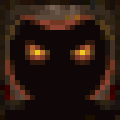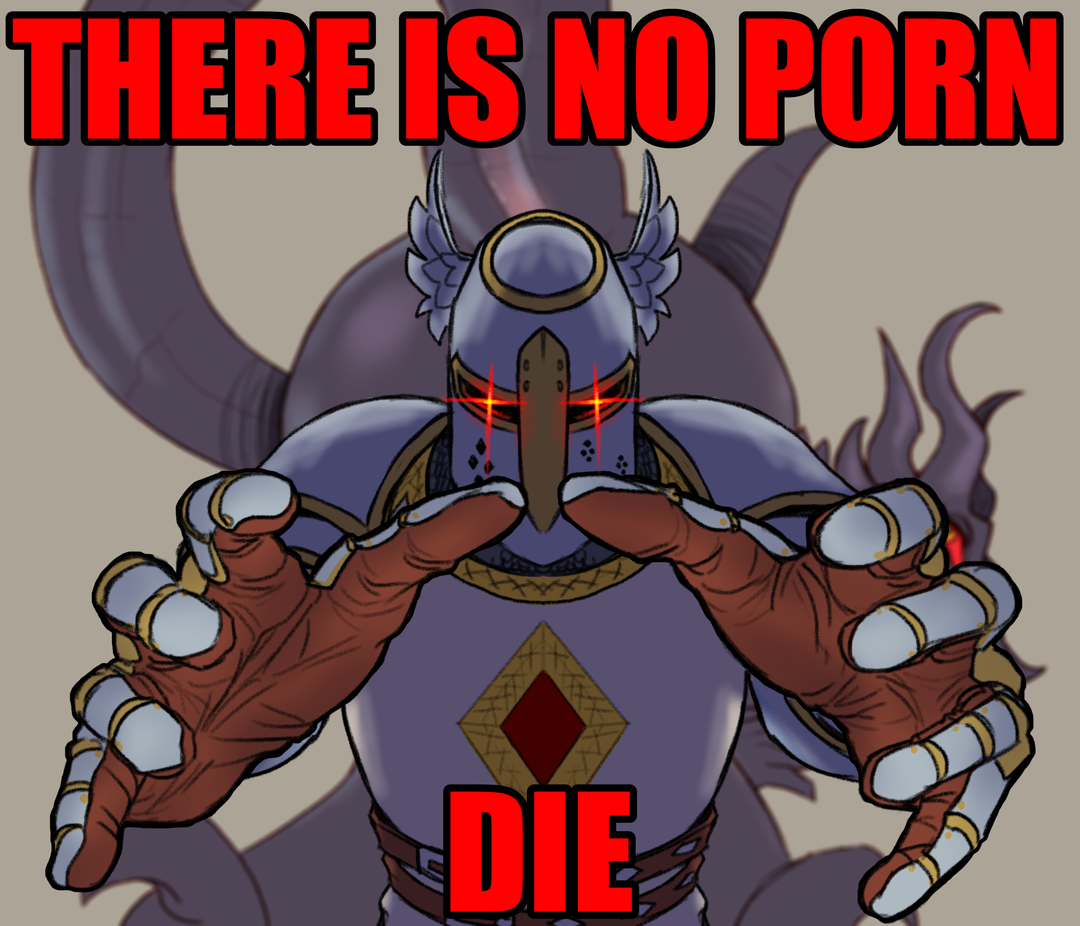- cross-posted to:
- [email protected]
- cross-posted to:
- [email protected]
Oh, man, imagine thinking that minimum requirements weren’t a thing before.
I once deleted the operating system just to fit a single game into my hard drive, booted from floppy while I was playing it and reversed the process when I was finished. Sometimes games were aiming at a specific speed of computer and if you had a computer that didn’t run at that specific number of megahertz the game just ran like a slideshow or in fast forward. I didn’t realize some of my favourite games were running under the speed cap for years sometimes. We just didn’t have a concept of things running at the same refresh rate as your screen in the early 3D era until APIs fully standardized. Sometimes you upgraded your GPU and the hardware accelerated version of your old software rendered game actually ran slower.
Also, game developers “then” made arcade games that literally charged you money for dying, then charged you more money for effectively cheating at the game and actively asked you to literally pay to win. We used to think that was normal.
Also, also, we used to OBSESS about games being bigger. The size the game took up was heavily advertised and promoted, especially on consoles. Bigger was better. We were only kinda glad that CDs could do 500 Mb, so we could keep getting bigger on a single disk, but by the time FMV games got popular triple A games were back to coming into books with disks instead of pages. This was still seen as a selling point.
Also, also, also, the assembly code of a whole bunch of old games is sheer spaghetti. Half of the mechanics in NES games are just bugs. There are a couple of great Youtube channels that just break these down and tweak them. In fairness, they didn’t have development tools as much as a notepad and a pencil, but still.
There’s some nostalgia goggles for sure.
I mean, the demo for Rollercoaster Tycoon (Mr. “Hand coded in assembly” there) bricked our Windows 98 machine when i installed it as a kid. My dad was pissed: we had to reformat the harddrive, reinstall windows, all that.
Seems like a golden era of running everything in ring 0, although that wasn’t called like this then, afaik
I remember having three or four games that you had to boot the computer into directly. As in, insert floppy and ctrl-alt-delete to launch the game.
Yeah I remember the specific clock speed thing! I had a game that I loved on a friend’s computer and didn’t get to play it much. Some sort of space sim / combat game. Years later I had my own much more powerful machine and was hyped to check it out. Installed via dosbox or whatever, loaded it up, and it ran at fucking 10x speed! It took seconds to walk around a city and the combat was completely unplayable. So sad but also pretty funny. No idea why they attached the FPS directly to the hardware. If you want an easier game, just get a worse computer apparently.
No idea why they attached the FPS directly to the hardware.
It’s the most trivial and straight forward thing to do. The game is a simple loop of:
- get user input (can be nothing)
- calculate new game state based on old state and input
- draw new game state.
The speed of the game is now 100% dependant on the speed of computation. NOT attaching fps to hardware is the hard thing, as you need to detach the game state loop and the drawing loop and then synchronize them. Doing that yourself is extremely complicated. Today developers don’t even need to think about that because the whole drawing loop is abstracted away by things like directX/Vulcan and the game engine. But without those tools, fps tied to CPU speed is basically the default.
And in fairness a lot of microcomputers at the time were closed specs. Even on PC for a while you were theoretically aiming at a 4Mhz XT or, at worst, also wanted to account for a 8MHz AT. By the time IBM clones had become… you know, just PCs, a lot of devs either didn’t get the memo or chose to ignore it for the reasons you list.
Most of the time “lazy devs” are just “overworked and underfunded devs”, but the point is, that didn’t start this century.
Also games have gotten way more complicated since the gameboy colour era. I’ve coded a basic 2D physics engine from scratch (literally just circles with soft collisions) and its not just enough to set up the vector math correctly. You can literally make a true to real life physics model (as far as the math of infinitely rigid perfect spheres on a perfectly flat plane goes anyway) and have all sorts of problems crop up because computers aren’t the universe and order of computation is a bitch.
Even the first Dark Souls had game ticks tied to the FPS because consoles had been standardized to 30 FPS for decades.
On the PC port, it was locked to 30 FPS, but a super popular mod unlocked the FPS, and at 60 FPS DoT effects ticked twice as fast, and at even higher FPS could kill you before you had time to react.
GTA San Andreas has an option to uncap the framerate on PC, which outright breaks certain mechanics.
SoundBlaster.
So glad things like that are the past.
Hah. In fairness, sound cards weren’t “minimum requirements”. It’s just that depending on the hardware you had the game would just have a completely different soundtrack, 75% of which sounded completely broken. If you were lucky the “minimum spec” was silence. If you were unlucky it was making your beeper sound like somebody had tripped a car alarm.
People these days are out there emulating Roland MT-32s on Raspberry Pis. I didn’t have a sound card until the Pentium era. Every DOS game in my memory sounds like a Furby got a bad case of hiccups.
I leave this as an example, but please understand this is the absolute best case scenario. Michael Land and the rest of the Lucas guys were wizards and actually cared to tune things for multiple options, including really impressive beeper music.
I had a TI-99/4A (It’s part of the reason I’m a Texas Drunk) with the speech synthesizer peripheral. Everything sounded wild.
I have heard the difference of sound cards before in a video explaining it, but it is still just a wild too me to hear it, and nearly a bit difficult to imagine it actually being that way. Like I KNOW it was how sound on computers was at that time, but it is still hard to imagine my games sounding so completely differently depending on what pc I play it on.
I have the opposite problem, where I have to remind myself that a lot of people making these memes just don’t have a frame of reference for any of this. I’m used to having been there for the vast majority of home computing, it’s so hard for me to parse having been born with computers just mostly working the way they do now.
Oh, and while I’m at it, it also looked completely different:
https://www.youtube.com/watch?v=xo2_ksqxbiQChanging GPUs these days mostly just changes your framerate. That wasn’t always the case.
I can somewhat comprehens the difference in appearance and sometimes game play, but at the same time not really. I have seen the same game be different on pc vs console and a third version on handheld, and while I know this where all computers, I still very much think of them in the way of game consoles you could also do computer things on, even though I know that they were computers that you could play games on.
I blame it a bit on terminology, every time I hear about old computers, they are always referred to much more similar to how we refer to games consoles today then we do with computers. It is an Amiga 500, Amiga 1000 or an Atari 7800 or Atari ST. That is much more similar in my head to like Nintendo Wii, Nintendo Switch, PlayStation 2 or PlayStation 4.
I have never really heard computers be referred to in that manner now a days, they probably are to some extent in some circles, but I have completely managed to miss them, and I do have some interested in computers. Like I can tell you I have owned a Dell, a HP and a Lenovo amongst some, but I would really have to do some digging to maybe be able to tell what version of them it was.
I know my current one start with G and the following looks some what like lam, but I only know that because it kinda looked like Glam so I named it that and because I have needed to Google that exact model, to look up some stuff.
I can however understand how you feel having grown up with with the computers and now talking to and interacting with a lot of people that never experience the older ones. Realising that people have a completely different fram of reference to something is a very weird thing to experience and somewhat difficult to navigate.
I am however happy that you and other people do have different experiences as then I could learn about how sound cards made games sound completely different or how changing GPU or computers manufacturer could completely change the game.
Man I loved the hell out of my SB16. I still play a lot of old DOS games in emulation and work pretty hard to get them to sound like I remember vs the higher fidelity versions.
set blaster=a220 i7 d1 h5 t6
The last time I had that bug was with Oblivion.
It was the first time I played it and found the combat frustratingly difficult because of the increased speed. Especially in dungeons where I had to bait enemies one by one just to not get overwhelmed. One hand was always holding a healing spell as well.
Sounds like Commander Keen?
Edit: I meant Wing Commander
Damn there’s a throwback. Annnnd I feel old now hah.
That’s it! Wing Commander!
deleted by creator
At my buddy’s house, he had a game called something like ‘wings of glory’ that was meant for an older clock speed. We were messing with the turbo button and it quickly became unplayable when not in the slower mode.
If you try it again, emulators like dosbox let you slow the game down to be playable. I don’t remember the exact setting but I’ve had to do it on things like Freddy Farkas iirc.
Ecco the dolphin was made specifically hard to ensure people couldn’t beat it on rental during a weekend.
Right. That was common, too. Games were tiny and very expensive, so broken balance was often used to pad out length. And yeah, it got crazy once Americans started popularizing rental and publishers got desperate to make the games less economical to beat without purchasing them.
I did finish Ecco 1 legit, though. Once.
I’ve tried the last couple of stages a few times. I still don’t understand how tween me managed that. Even on a CRT with original hardware and zero lag that’s a stupid thing to try to do.
Pink Floyds welcome to the machine still gives me flashbacks to the last stage of Ecco 1.
Bigger was better, since a larger game meant they packed in more content. Now the bloat is out of control since all game content is delivered over the Internet.
Bloat is out of control because games are HUGE and you can often trade size for performance if you have enough memory to do so.
Also, memory used to be extremely expensive, especially catridge ROMs. Outside of the Switch this is less of a concern now, that’s true, but the tradeoff is you get to have pin-sharp high resolution assets and tons of performance optimizations instead of… you know, just chopping enough frames of animation to fit your sprites in 16 megabits then charge a hundred bucks for the extra-sized cart. You can buy a terabyte of extremely fast storage now for the money it used to cost to buy a single game shipped on a cartridge.
…memory used to be extremely expensive…
When I got my brand new 486 PC, I paid over $800 for a 4 MB SIMM card. That is 4 MEGS, not GIGS, 4 MB. That brought up my memory up to 8 MBs.
I was also king of the hill when I added a second hard drive for a total of 40 MBs!
The hard drive I had to wipe from the OS, as I mentioned above was a whole 20 gig. 386-ish era. It seemed so huge when I got it (and so expensive) and by the time that PC was done it was… well, a “wipe to OS to fit stuff in” drive.
But that’s not necessarily the point, the more relevant thing is how big things are relative to storage and how cheap it is to upgrade storage. It’s true that storage sizes and prices plateaued for a while, so a bunch of people are still running on 1-2 TB while the games got into the hundreds of GB. But still, storage had gotten so proportionately cheap before then, and very fast storage is so overkill now. A 1TB Gen 3 NVMe is 75 bucks, and most games will run fine on it, Sony propaganda notwithstanding.
20 GB during the 386 era does not check out for home PCs.
20 MB is more realistic for that era.
20 megs maybe.
Hah. Yeah, I meant 20 megs. My muscle memory just doesn’t want to type a number that low, it seems.
because
gamestextures are HUGEYou can fit loads of x360-ps3 era games in the same space CoD warzone takes. The irony is that, for PC players with lower specs, that’s a lot of wasted storage, since they’ll never use/load the higher res textures.
You can buy a terabyte of extremely fast storage now
That line of thinking is what leads to extreme, unnecessary bloat. “Just buy more storage, brah”
You can absolutely do that. You can also fit 16 frames of the Xbox 360 game into a single frame of the Xbox Series X game.
Sometimes people forget how much bigger a 4K target is compared to a 720p image, so I added a bit of a visual aid below. Those two screenshots are to scale, displayed at the native resolutions of their respective platforms. Just keep in mind that the big one is from a 1440p 21:9 monitor, so on a 4K TV the picture would have two of those stacked on top of each other.
It’s good that this is smaller, because If you squint you can also notice the Xbox 360 game is extremely blurry and looks like it’s in black and white. That’s because it is. The 360 had 512megs of ram, to share between the CPU and the GPU. The Xbox Series X has 16 gigs, so 32 times more, and it’s running a cool 300 times faster. 360 games were compressing textures within an inch of their lives to fit them into that tiny slab of memory, stripping color data among other things.
Computers are not magic. If you want to draw 15 million pixels of a wall and not have it look like soup you need data for each of those pixels. If you want that data to fit in less space you have to either spend resources compressing and decompressing it or you need more storage to put it in. Or you can draw it procedurally, I guess, but then you’re back to the performance problem.
On the other thing, it’s not “just buy more storage, brah”, it’s that storage has to ramp linearly with memory. If you are trying to build huge worlds running at hundreds of frames and streaming data at gigabytes per second out of a SSD you’re going to need to put those assets somewhere. The problem isn’t (just) that games are big, it’s that the ability to move those big assets has grown a bit faster than the ability to make cheaper, faster storage for the same price.
Games aren’t big because developers are lazy, they’re big because physics and engineering are hard and not every piece of technology improves at the same rate. But hey, on the plus side, storage HAS gotten cheaper. By the end of its life the PS3 was shipping 500 GB. The PS5 and Xbox Series ship 32 times more ram but only 1.5 to 2x more storage because storage is where everybody is skimping to contain costs. That’s not commensurate with the increase of visual fidelity or asset size, but at least you can add more for relatively little money, especially on PC.
EDIT: Sorry, this client didn’t like the picture going in. Link to an example below from a random image hosting site. Follow it at your peril, I make no claims about its safety.
https://ibb.co/Ss7RfzW
I remember reading an early-2000s book on game dev. It did mention that some game (I want to say one of the Unreal games, but I can’t recall for sure) had to code their level loading in assembler because it was taking upwards of 10 minutes in C++.
Yeah, I definitely think the OP has super rose-colored glasses on. The free shareware was pretty awesome, though. I had one called “80 mega-hits” or something like that with a ton of games (many of which my poor old PC couldn’t run).
I do think that optimization has slacked off more as hardware prices generally trended down. Disk space I don’t so much mind, but memory and CPU are still expensive.
The “free shareware” thing is kind of back. I’ve been noticing more and more games producing demos; check out Steam Next fest, for example.
I also remember playing a ton of games from a CD. I had a Mac at the time, but it was “dos compatible”, which meant it had a 486 in addition to the Mac processor at the time, so you could switch over into dos, though you could only allocate half the ram to it.
We ended up installing Windows 95 to play a lot of the games, which ran great on the available 4 MB of RAM.
This is one of those things where I’m not sure what people mean when they say it.
There are bugs that affect performance, and yeah, we’re generally more likely to see bugs fro several reasons now. But there’s also games just being heavy. We’re not in a cycle where the top of the line hardware just maxes out many games, because… well, we’re doing real time path-tracing, we have monitors that go up to 400 Hz and resolutions up to 4K. The times of “set it to Ultra and forget about it” with a 1080 are gone and not coming back for a really long time. Plus everything has to scale wider now, because on the other end we have actual handhelds now, which is nuts.
So yeah, I’m not sure which one people are complaining about these days. I’ll say that if you can play a game in a handheld PC and then crank it up to look like an offline rendered path traced movie that’s way more thought to scalability than older games ever had, but maybe that’s a slightly different conversation.
I used to have a meta-game where I tried to fit X-wing and Windows 3.1 on the same 40MB hard drive. Just barely made it.
I remember that for MegaMan we needed to turn off the turbo (yes the CPU button) or it ran really fast.
Maybe the opposite, the turbo button actually slowed down the CPU so you could play games that had a speed limit.
CDs could do 500 Mb
It was actually 700 MB
Oh, no. It was not.
The smallest standard for CDs was 63 minutes and 550-ish MB. For most of the life of the medium you’d mostly get the 74 min, 650MB one. The stretch 700 and up standards were fairly late-day. I tend to default to 500 in my head because it was a decent way to figure out how many discs you’d need to store a few gigs of data back in the day, though, not because I spent more time with the 63 min CDs.
The smallest standard for CDs was 63 minutes and 550-ish MB
I think I came along around 2 years after burners were commercially available, so I never saw that. And the 700 MB discs came along very shortly later. So I never had a concept of a 550 MB CD (btw you said 500 MB). This is the first I’ve heard of it.
It did exist, I promise. But again, I just default to 500 because it was such common shorthand to think about it in terms of needing two discs to store a gig. And to this day I still have 650 CDs laying around, even when 700MB ones were available they were both around at once.
I think some of the mismatch may also be that you’re thinking about it in terms of storage only (i.e. CD-Rs) because of your age and I’m probably a bit older and was mostly talking about them as read-only media. It was years between the first CDs in the late 80s and writers being widespread at all, assuming whatever game or application that came in a single CD was going to take 500 meg-ish to duplicate or install was, again, pretty useful.
In any case, this is obsolete trivia. The point is we went from games being tens of megs to hundreds of megs overnight, and we were all extremely pleased about it.
You really seem to be misremembering again, since the original CD spec could hold 650 MiB of data.
You are half right. I am misremembering 63min being the original standard of the red book audio CD, that was 650 already, although apparently 63 min CDs were used for audio mastering at some point? Info about that is sparse. As a side note, man, modern search engines suuuck.
Anyway, 63min/550MB was the low capacity standard of the CD-R instead.
People are aware of them, but man, it took me a while to find a contemporary technical reference to it being available. I ended up having to pull it from the Wayback Machine:
https://web.archive.org/web/20070110232445/http://www.mscience.com/faq55.htmlAnd also this, from a eBay auction selling a box and labelling them “incredibly rare”, which apparently is accurate. I came just shy of digging through my pile of old CDs to see if I have any left. I may still do that next time I have them on hand.
Well now you’re changing the conversation to CD-R, not just CD.
I didn’t realize some of my favourite games were running under the speed cap for years sometimes
Same, in my case as a European. PAL is weird.
Oh, that’s a whole other subject. “Old games were so polished and fully finished”. Meanwhile, half of the planet was either playing games squished down, in slow motion or both. And most of them didn’t even know.
It’s not as simple as that, either. May people think all games ran 15% slower. Many games did have some retiming somewhere, but it was definitely not great and people didn’t complain because with no internet, they often didn’t realize what was going on.
I once deleted the operating system just to fit a single game into my hard drive, booted from floppy while I was playing it and reversed the process when I was finished.
I remember doing this Battle of Britain and TIE Fighter! Man, memories.
“Then” is just indie today.
That and it easily running on Linux, either naively or though Proton, is why I haven’t touched any AAA in like… at least 5 years? Maybe closer to 10.
A lot of today’s indie devs are also… well…
groomerwojak.jpg: “I groomed a teen fan of mine, and when she came forward I made her to write an apology, also I spent my Patreon money on a sexdoll, and my code is spaghetti.”
“We barely managed to make a functioning game with premade assets, and our popularity was so dependent on Pokémon not performing well, our fanbase is a toxic cesspool as a result, who can’t express the love to the game without actively dissing Nintendo.”
“I’m a bigoted con artist who rebrands every time they get busted for his crappy horror game.”
“Optimization? We are already using low-poly assets!”
“The assets in our pixelart games are very unaligned, and we use high-resolution fonts because no one makes bitmap fonts anymore.”
Nothing wrong with spending Patreon money on a sexdoll.
It is when you’re supposed to work on your game.
He was working on his game. The sex doll only turns him down half the time now.
If you donate money to develop a vaccine against something, much of that money will go towards the salaries of researchers to pay for their work. Some of them may buy sex dolls, dildos, satisfyers or chastity belts with some of that money, because they have rightfully earned it, and the money you paid was still used to develop that vaccine.
I mean nobody said all indie devs were great, i just think that if you want to find examples of good game development today you’re largely going to find the stars are indie, not triple A
Why are you twisting things around? It’s Nintendo fans that won’t shut up about plagiarism to the point that the The Pokémon Company told everyone that they know, stop sending emails about it.
Por que no los dos?
I didn’t even mention the plagiarism stuff here, which was likely due to the creators learning monster design only from Pokémon.
The meme does specify AAA
But only for today. The concept of triple A didn’t really exist back then, and at least one of the “then” game devs was totally indie for the game he made
Games back then : created by 1 to 4 people with autism because they wanted to have fun on a computer
Games now : driven by dickheads that just left business school at the whims of billionaire conglomoration funds.
I miss when games used to be good. Anyone 'member Vampire Survivors, Lethal Company, Bug Fables? Developers these days just can’t compare.
now that’s survivor bias
EDIT : here’s the fun thing, Lethal company would have been a mod back in the day
Tbf, games were easier to create using in-game functions and logic that was created for another game. Modding a whole rework was easier than making the entire game from scratch. Undeniably lethal company is similar in look and feel but it has better game play than some mods.
Exactly, creating a mod for half-life or similar titles was simply the easiest way to get a decent working 3d fps engine without coding it yourself.
the tools these days make it basically the same to work a mod or an inde game.
Is your point that developers today aren’t as good/benevolent/whatever as devs back in the day? I’m saying (sarcastically, I suppose) that the same type of developers exist today. What does survivor’s bias have to do with it? Is my point moot because GMOD exists?
Your point is moot because there is an unending hose of indie games being created and knowing that 2 gems exist doesn’t mean the rest of the cottage industry measures up to the things being achieved earlier, and nor does said indie scene have a similar rate of success as the old industry back then.
What are you, a shareholder? Why does the ‘rate of success’ matter? I didn’t list three games because there were only two gems.
It’s like being at the library and saying “fantasy authors will never compete with what JK Rowling was writing, just look at how many books are here!”
it’s survivor bias because having one or two good games in a tidal wave of indie bug riddled, knockoff messes isn’t exactly the same thing as the innovations from back in the day. Some asshole’s Amnesia knockoff or twin stick shooter being good is hardly surprinsing when 5000 of them come out daily.
To be fair, game devs did the hackiest shit to deal with the constraints of the time. They did things that no programmer would do today because they’re bad practices when you’re not worried about tiny amounts of RAM or storage.
I love watching videos about old game systems programming. The gymnastics you had to do to code, like, super Mario, just to show more than 3 colors is really interesting.
People who think modern coding practices are bloated should study why certain speed running mechanics work. A lot of them stem from things we would never do today. We’ve removed entire classes of bugs by using “bloated” languages and tools.
But we introduce entirely new classes at the same time.
A Cuphead dev reacting to Cuphead speedruns is an interesting watch because he explains why all the tricks work.
Not really. We have more bugs because there are more lines of code.
And fewer lines of coke.
DEVELOPERS! DEVELOPERS! DEVELOPERS! DEVELOPERS! DEVELOPERS! DEVELOPERS!
I vaguely remember this. What is it from again?
You will probably enjoy this video: https://redirect.invidious.io/watch?v=nYDmBdUalgo
Dude livestreamed Super Mario 64 for more than a month with a bot attached that perfectly abused a physics quirk based on floating point precision, just so he can crash the game at 0:00 at New Year’s by overflowing a value. This over-one-hour-long video is the summary.
If you haven’t seen them, look up the Ultimate talk on YouTube. They go into real depth on c64, Gameboy, Atari, Amiga, etc. development and all the tricks that are used.
The games then were closer to embedded dev than software dev. The cartridge had huge limitations and the devs had to know those limits and work around them.
Cartridges were also full on daughter boards instead of just an older version of SD cards. There were massive differences between games. The later SNES games with 3d graphics had a whole extra processor included in the cart.
The old Super FX chip. I’m old enough to remember when they released the original Star Fox and flogged the super onboard 3d processing. The ads in comic books mentioned it by name.
Stunt Race FX really stood out to me, even now I remember being impressed by the visuals.
2d games did, too. The SA1 chip did a lot to make games run better on the SNES. There’s mods out there for running games on the SA1 chip, especially shooters like Super R-Type, and it’s a substantially better experience.
I think it was David Braben that used the video buffer as extra ram. Coded text on screen in the same colour blue as the sky and stored it there.
Sometimes they did it just in case they needed those limited resources, but its not really needed. SMW is a good example, where spite interactions are only checked every other frame, but modders generally remove that limitation without any issues. There might be weird edge cases where in vanilla without glitches you could theoretically accumulate enough sprite on stream it causes a slightly more noticeable slowdown without the ever other frame. With cape float, it only checks if you are holding the jump button once every 4 frames or something like that. Totally unnecessary and makes the game feel less responsive. Granted, during a casual playthrough, you’d probably never notice that floating stopping after letting go of the button varies by 50ms depending on which frame you let go of the button relative to which frame it checks.
And even then the code was far from the best it could be.
This guy optimized Super Mario 64 and drastically improved performance while fixing several bugs.
Problems with game developers might better be understood as problems with capitalism, to paraphrase Ted Chiang
We can’t update games or refactor code to make it smaller bc our bosses demand we constantly work harder, better, faster, stronger. They force us into games that require more expensive hardware bc the entire tech industry depends on people upgrading every other year. And it’s online constantly bc we hoover up player data for our new profit centre where we sell all your data.
And now they made a meme that deflects blame off them and onto devs, who have way more contact w the public than anonymous rich people
CaPiTaLiSm HNNNNNGGGG!
Capitalism was a thing back before games got shitty too.
Enshittification is just another name for the type of capitalism America practices.
Everything gets worse because it’s not profitable to stay good when there are only 147 umbrella corps worldwide. Capitalism doesn’t reward innovation in products when monopolies exist, it rewards innovations in minutiae of existing products.
See also: DLC, Premium Passes, Microtransactions, Seasonal Content, Free-to-Play*, Ads in AAA tier games and everywhere else, Subscriptions, and every other shitty innovation the market (no not consumers, shareholders) rewards.
That’s to say nothing of how these companies extract the value of their employees labor and then lay them off to keep turnover at whatver level the coke addicts in the c-suite have determined is best. Crunchtime, harrassment, fuck man look at Bobby fucking Kotnick and his blizzard shitshow.
Tetris: hold my beer
*Socialism intensifies*
Qhile that is true the effects of it were lesser since it was more niche. Plus some of the best games are still in their own weird niche, ive been playing STALKER GAMMA which is a free modpack for a free mod, and help I am being consumed! I DREAM OF REPAIR KITS AND GUN ANIMATION, HNNNNNNGH KILL MONOLITH!
So we’re just gonna conveniently forget all the shovelware from that time period?
Yes. Because older is always better. Then when the present is the before times people will look back fondly on it too.
Wait…just how much worse are they going to get‽
deleted by creator
That’s just being intellectually dishonest in the opposite direction.
The truth is some things do get worse, some things get better, and in either case, the right thing to do is examine the tangible effects, positive or negative.
Yeah, heavy survivorship bias in this one.
Everyone seems to think that games like Doom and Half-Life came out all the time. I remember looking at shareware disks in shops and seeing loads of games that looked like total crap.
For sure! just go to Abandonware and try to go to a specific year to find something. You have to wade through pages of garbo to find something worth playing.
One of my favorite pastimes as a kid was digging through the “1000s of Games” disc I had that was full of demos, shovelware, Doom mods, and tons of other garbage. Occasionally you’d find a diamond hidden in the turds.
There’s even a Youtuber who does “Shovelware Diggers” as a show and it’s just that! Him and his community riffle around in old shareware collections looking for treasures, which he showcases. (Edit to add: Looked it up and he ended the show after 300 episodes! He still does other retro gaming stuff too. https://youtube.com/playlist?list=PLCIZNtotF3Xh0dfQjJx8XcP_73UGtjqN0&si=Gvx5W0mmjTE48z79 )
But yeah, most of the content on those discs would have qualified more as viruses than games, if they even ran in the first place!
Rollercoaster Tycoon was 1999, so I’ll choose to believe that the “then” era was after the big gaming crash of the 80s. There was still shovelware, but it wasn’t nearly as bad as during the 80s when you’d see mountains and mountains of terrible, non-functioning games. I don’t think anyone really has nostalgia for that period of gaming, but the late 90s to early 2000s really were as close to a golden age as we ever got.
Gaming crash was more of a console thing. One of the arguments was why you should buy a console when you can buy a computer for a bit more and do so much more. Computer games ran through it mostly unfazed.
Or all the shitty licensed games. I’m sure there’s a number of older gamers triggered by the LJN logo.
You realize it’s not devs that make those decisions, right? It’s publishers and execs. You know, the guys who make the actual money in all this. Stop blaming devs for stupid exec decisions.
So glad to see op being called out in the comments
Well, you’re right. However if no dev stands for that it couldn’t get made.
Of course I also understand that devs want to eat, too. But the truth is somewhere in between.
Meh, it depends on which of the issues you’re flagging. Games are large for understandable reasons, both technical and practical. The optimization problem is… complicated, and my thoughts on it get really into the weeds, but it’s not as simple as people would think. And I’m trying not to pay too much attention to the “can’t fix our game” panel, because at best it makes no sense.
The always-online thing is maybe the most controversial, and you’d definitely find the most developers who agree with you on that unconditionally. But also, tons of offline games get made on all types of scopes.
Yeav plus games today are way more complicated so there is a LOT more to optimize, and the execs are rushing those games out
Exec: breast milk for everyone!
Also, devs stick around for it. They aren’t providing an essential service, like sticking around as a nurse in a poorly run hospital…they are creating a novelty.
And where should they go? How else do they make money?
Huh? We live in a society! Do anything you want!
They are technical knowledge workers and hold very privileged credentials in western markets.
To be clear I’m not excusing corporate policy and such, but the same way technical engineers at oil companies are complicit in accelerated climate change, devs at shitty companies are complicit in shitty game products.
Getting downvoted by salty tech folks working for nestle and shell I guess.
Yup. Or coddled game devs who think they are gods gift to society.
Game dev is real work, but it’s entirely optional.
I never worked for big bad companies but even the “green, progressive” ones wore me down eventually, there just aren’t any companies in the modern world over a certain size that aren’t scummy one way or another. That’s why I only work for myself now.
I almost worked in NGO but it didn’t work out in the end, I could still be curious to check that out at some point.
Guess the Devs are just following orders, huh?
Yeah, totally, they’re no better than Nazis, top fucking comparison, buddy.
It’s an extreme example but the principle remains the same: The idea of someone’s responsibility when following questionable orders.
No, it’s a fucking stupid comparison, man. One thing leads to dead people, the other thing leads to slightly less convenient entertainment software. Can you figure out the rest for yourself? Fuck all the way off with your “questionable orders”.
What’s with the hostility? Did your Wife cheat on you again?
I expressed how your comparison is stupid. I’m sorry if you perceive that as hostile and think you need to get a point in by making up an equally stupid scenario about my marriage. Obviously I hit a nerve. Can’t say the same about your shitty attempt at an insult.
I’ve written software professionally for two decades and I’m still in awe of the people who used to wring every last drop out of 512kb of memory, a floppy drive and 16 colours on the Amiga 500.
I played some pretty good games on the 48k spectrum back in the day. My first computer was a zx81 with 1k ram, it was a bit challenging to do anything interesting with it - but people still wrote games for the thing.
While true that it’s impressive, now games have to be made to work on variable screen sizes with different input controllers, key mappings, configurations, more operating systems, with more features than ever. It’s an absolute explosion of complexity.
Even making a 2D game for today’s hardware is more difficult than making a 2D game for Gameboy.
Honest question, is that true? It’s my understanding that developing a 2D game today would be a simpler task than for a system from the 90s due to so many improvements in development software.
deleted by creator
“WHY ARE YOU PIRATING OUR GAMES???”

BECAUSE IF BUYING ISNT OWNING THE PIRATING ISNT STEALING.
It seems like a clever qoute when you first hear it, but stealing a rental or a lease is still stealing.
“Because it’s easy… And it does a lot of damage.”
Great happy souls refrence.
Disgruntled kitty isn’t gruntled.
Not just games . I download one of the trendy note pad apps. It’s 500mb.
I’ve been using zoho notes on my phone for a long time now. It started out really good, but somehow has become so bloated that it’s laggy. It’s PLAIN TEXT. How do you make that lag??
Thanks for supporting shitcoin mining, I’m so close to recouping my goal of 10% of the thousands of dollars I’ve lost.
Which one? Obsidian for desktop is 400MB, but it lets you make knowledge trees and includes a zotero extension. Although maybe it doesn’t need to be 400MB.
Obsidian was big - I think close to 500 on the mac ? But Logseq was another
Very rose tinted glasses. I remember horrifying cache corruption bugs that locked you out of certain game areas permanently on that save, random illegal operation exceptions crashing games (no autosave btw), the whole system regularly freezing and needing to be completely restarted, games just inexplicably not working to begin with on a regular basis because of some hardware incompatibility and the internet sucked for finding fixes then and patches weren’t a thing so you were just screwed.
I would say that games not all being written in C and assembly trying to squeeze out every possible performance efficiency with nothing but dev machismo as safeguards is in fact a good thing.
Here’s revelation: most game engines are written in C(++)
Yes, but they are made by different people and all those bugs have been worked out over time. The people actually making the games are doing so at a higher level with more safeguards and it shows.
What a horrible take. Game devs were so bad at one point in the past they almost killed the entire market. Classic survivorship bias here.
That’s because the business assholes flooded the market with shitty games that cost $120 (adjusted for inflation) that looked like this :
https://i.imgur.com/yQAWeYw.jpeg
Not the game dev’s fault, it’s the business asshole’s fault, just like the image.
Pretty sure it’s on the devs for making the buggy games though. IIRC, ET is unbeatable without cheating or playing a patched version. It’s far from the only one with problems.
I have news for you, all software is riddled with bugs and no dev has infinite time.
The reason some software works better than others is that people paid for it to be developed for long enough.
Pretty sure it’s on the devs for making the buggy games though.
“Hi, you have 5 weeks to make a game based on this IP because we HAVE to ship for christmas.” - No way in hell anything remotely decent would’ve come out from 35 days of work.
Not the entire market, only the American one. Everywhere else was doing fine.
Game devs were so bad at one point in the past they almost killed the entire market
which event are you refering to?
There was a period of time when a massive influx of shovelware was released. Think stuff like the ET game. No one wanted to buy it, and the industry almost became a bust. Nintendo came in and almost single handedly revived the entire industry by releasing novel, high quality games like donkey kong. This is why Nintendo is a modern household name and why you mostly see atari in museums.
Also the Atari name/trademark/copyright got sold, and mergered about a dozen times. The current owners bear basically no relation to the original game company.
I think he’s talking about that time when Atari buried a bunch of their games in a desert in Mexico because no one was buying them
New Mexico, the American state. Not Mexico the country.
Myb
For those that are unaware, the second chad is most likely referring to .kkrieger. Not a full game, but a demo (from a demoscene) whose purpose was to make a fully playable game with a max size of 96kb. Even going very slow, you won’t need more than 5 minutes to finish it.
The startup is very CPU heavy and takes a while, even on modern systems, because it generates all the geometry, textures, lighting and whatnot from stored procedures.
I remember beating that and just being really surprised at how well it worked
Fuck the haters. 80s game devs were creating beauty out of nothing.
I wasn’t exactly old enough to have experienced this, but I know there was a time that if you wanted to play a PC game, you didn’t buy it on a floppy or a disc; you got a book with code that you had to type up and compile yourself. If you did more than just follow the book, you could understand it and change it to be whatever you wanted!
This is why I wish everything was open source. If I don’t like the way something is done, I can tweak it. Any part of it and make it perfect for me.
That was more the zx spectrum / commodore era and even then you could still buy most things on tape. Magazines used to print code though.
At least until the cover tape wars started. Then it got crazy.
But yeah, I remember taking shifts with my pal typing lines in. One mistake and you got to learn the joys of debugging at age 7.
The closest I got was learning that the TI-85 I used in my algebra classes had BASIC programming in it, and I found the code for a rogulike dungeon crawler kinda like Eye of the Beholder specifically for the calculator. At the time, I already knew plenty of BASIC myself so I could tweak things as I found bugs or generally didn’t like the stats of an item.
I’m a software dev now, and I always like to say that ti basic was my first programming language.
Remember drug wars?
You can go to GOG, buy some really old game, install it on a PC, play it and after a few minutes go: “How the fk was I so dazzled with this shit back then?!”
At least for me, whilst most such game were A LOT of fun back then, almost all of them feel kinda meh nowadays, the graphics-heavy ones because they look like shit now compared to even games from 10 year ago and the other ones because their game mechanics are so shallow and simplistic (and often oh so reliant on reaction times) compared to even what Indie companies have been doing in the last couple of decades.
Yeah, the memory of the fun that was had survived the passage of time, but most of those games pale in comparisson to games I’ve played in the last 2 decades. Beware of confusing the two like the sterotypical old person who complains “Music was much better when I was young, before Rock-n-Roll”.
PS: I’m not even especially big on fancy graphics but instead prefer complex multi-layered game mechanics, so the kind of games from back then I still can enjoy today are things like Civilization.
“How the fk was I so dazzled with this shit back then?!”
Lack of games to compare to, mostly. For instance, how many games could you compare Warcraft to, back in 1994? Probably only Dune II. By 1999, any RTS game would be compared to Starcraft, Command and Conquer, Age of Empires, Total Annihilation and possibly others. “Doom clone” remained the definition of FPS for roughly 3 years. Meanwhile, every platformer since the late 80s was compared to half the catalogue available on the NES. Something something “learning from others’ mistakes, standing on the shoulders of giants”
Not every old game is a gem, just like not every modern game is trash. One of my personal old favorites that holds up well is Jedi Outcast. Does a better job at making you feel like a lightsaber wielding jedi than Force Unleashed
Also, Suspension Of Disbelief worked extra hard back then and nowadays it’s a bit more lazy… ;)
I’m not talking about comparison to modern expectation; I’m saying that devs were scrappier, had less established frameworks of design and technology, and still created a beautiful cultural moment
Yeah, I mostly agree with that.
Mind you, the biggest hindrance the create something special back then was technical, nowadays it’s time: codebases are far more massive nowadays and the work that goes into making assets (sprites, models, audio, animation and so on) that go with the code in a modern game is gigantic compared to back then (or, alternativelly, if done with reusable assets you get just another of hundred of similar-loooking low-buget indie games).
Even something like Bioshock with it’s unique vision was already a massive piece of work when it comes to game assets, though artistically (and as a game too) it’s a masterpiece, IMHO.
I actually made a handfull of games back in the early 90s (a minesweeper clone for the ZX Spectrum done in Assembly and never published, and a Tic-Tac-Toe game for the PC done in C that I sold to a small magazine and did got published) and then started working on game making a few years ago, and definitelly the programing work has expanded in terms of size (with still some down-to-the-metal technically complex stuff like shader programming) but the asset creation work has massivelly exploded (no wonder AAA games have bugets in the hundreds of millions of dollars range).
Lemmings was not the product of a huge corporation.
I see stuff like this and I don’t blame developers/coders for all the shit that’s happening. If you objectively look at gameplay and such, most games are actually pretty decent on their own. The graphics are usually really nice and the story is adequate, if not quite good, the controls are sensible and responsive…
A lot of the major complaints about modern games isn’t necessarily what the devs are making, it’s more about what the garbage company demands is done as part of the whole thing. Online only single player is entirely about control, keeping you from pirating the game (or at least trying to) plus supplying on you and serving you ads and such… Bad releases are because stuff gets pushed out the door before it’s ready because the company needs more numbers for their profit reports, so things that haven’t been given enough time and need more work get pushed onto paying customers. Day one patches are normal because between the time they seed the game to distributors like valve and Microsoft and stuff, and the time the game unlocks for launch day, stuff is still being actively worked on and fixed.
The large game studios have turned the whole thing into a meat grinder to just pump money out of their customers as much as possible and as often as possible, and they’ve basically ruined a lot of the simple expectations for game releases, like having a game that works and that performs adequately and doesn’t crash or need huge extras (like updates) to work on day 1…
Developers themselves aren’t the problem. Studios are the problem and they keep consolidating into a horrible mass of consumer hostile policies.
deleted by creator



































